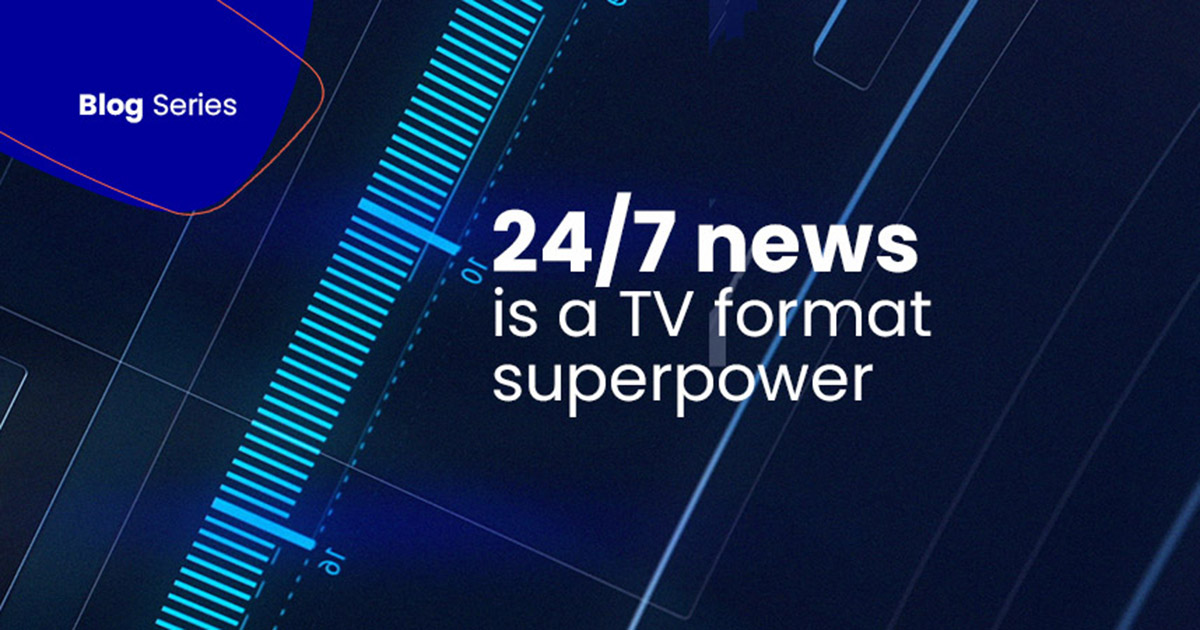Part 3 of a 4 Part Blog Series
In post 1, we set the stage for understanding why news brands should tap into the TV format superpower of live 24x7 channels. Post 2 examined the importance of live and breaking news content, discussing trends that are driving costs down for such activities.
In this post, we’ll delve into content workflow automation techniques – including digital playlisting, live-to-VOD, and automated content creation – that can help news brands achieve core programming needs of filling a 24x7 schedule.
TV scheduling lingo
Where to start? A few tried-and-true scheduling techniques can help us lay the foundation for our video workflow automation efforts.
The first is known as dayparting. This is an intuitive and common way to think about content scheduling. Quite simply, what are people doing at that time of the day?
Humanity has changed a lot in the last two decades, but we still need sleep; coffee when we wake- up; work to do in the day; dinner, household chores, exercise, ‘me’ time and sleep again. Those things haven’t changed. Programming that can successfully synchronize with those daily cycles is off to a good start.
Another technique is known as ‘blocking’. This is a planning strategy in which certain themes or genres become the focal point for programming and marketing. Think about NBC’s 1990’s Sitcom block of Must-See-TV comedies.
Genres often provide a strong foundation for blocks of programming. For instance, one strategy could be to consistently schedule a Global News block during the 5 O’Clock hour followed by a Global Sports News block in the 6pm hour. Now, promotional efforts can add heft behind messages that target viewers specifically seeking global perspectives.
Load the blocks
We can begin by placing empty blocks of programming on the schedule. As mentioned above, these may be themed by genre and the duration of each block could be set to different values. For example, you might have a 15-, 30- or 60- minute slot.
This basic TV schedule should synchronize with the content strategy being executed by your digital and broadcast teams.
News is a broad genre which can incorporate a wide range of fresh angles and sub-topics. The editorial team’s definition and categorization for each of these blocks can have multiple levels of depth using keyword and category tags within the MRSS feed
One hour prior to the programming block’s airtime, the system can pull assets from the feeds according to tags (and custom logic, if needed) and create a mini-playlist for that block.
Interstitials and filler content
One more problem to solve. Whatever content workflow you have and regardless of the average length of the content package you’re loading into playout, there will inevitably be gaps in your playlist that require filler content.
One such filler is called a ‘bumper’ or ‘breakbumper’, short video elements often featuring a jingle or sound accompanied by a graphical visualization of the channel or program logo. It serves as a branded segue at the end of the program, or the start of a commercial break, or possibly at the end of the programming block itself.
Indeed, these types of pre-recorded content elements – including interstitial programming content – have become much easier to produce over the past decade and are a key part of any channel creation playbook.
Leading cloud playout systems should have a media library in which these assets can be stored with their own set of task-related metadata. They are critical not only for plugging holes in the schedule but also for creating a cohesive viewing experience 24x7 and retaining viewers from one hour to the next.
In fact, these elements are so critical to the overall success of a 24x7 linear channel that it’s worth broadening and deepening this topic into the domain of programmatic or dynamic content creation workflows. To that end, we’ll title the fourth post: Dynamic Fillers: Tickers, Infovisuals & Interactivity.
Stay tuned with our updates and request our eBook of data on the News landing page at: Amagi.com/News
Read post 1: How much live content is needed
Read post 2: Going live in five
Read Post 3: News scheduling clip playlisting
Read Post 4: Dynamic fillers tickers infovisual slates





